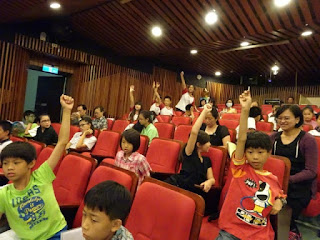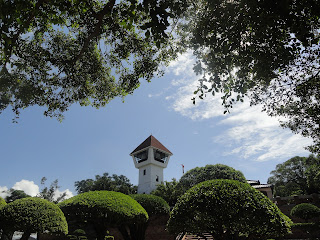Transitions have always been hard for me. As I sit here in the airport, suspended between two worlds, I am trying to come up with the words to express my thoughts in a meaningful way that isn't cliche! It's hard. And so, to follow in the pattern of my blog this year, I will let the pictures speak for themselves.
Saying goodbye to Claire and Sandy (and their family), sisters who have been amazing friends this year
Final get-together of the "Taichung International Singing Group," where we spent hours singing together one last time
Last few times with my Taiwanese family - giving the grandkids their gift and soaking up every last second with this amazing family I have seen every week for Chinese lessons and whole-family-plus-Teacher Sara excursions
Last dinner with Fulbright Taichung ETAs - the best group I have ever been privileged to be a part of
School goodbyes - on the last day yesterday, I went around to every class in the whole school to say goodbye, to give each student and teacher a note and candy, and of course, to take pictures!
My English club - they chose to come to the English Library twice a week, always eager to come again as soon as they could. Together we read books, wrote stories, laughed, ate candy, and spoke in English (I quickly lost count of how many times I pushed them, saying with "NO CHINESE!!!"). Their English is amazing, their dedication and hard-working nature admirable, their humor adorable, and they are 8 Grade 4 students I will very actively miss as I leave.
At the final whole-school morning assembly, the principal and dean presented me with gifts, and several classes came up and gave me cards and hugs.
In each classroom with each teacher!
The teachers told their classes to all hug Teacher Sara
My goodbye love notes
Blessings and goodbyes - I include these to share a snapshot of Taiwanese phrases, the amount of "stickers" used (even in the workplace), and to show the love we have all received from the Taiwanese people all year long.
From my Taiwanese family
From Patty, one of my co-teachers and an amazing friend
From a lovely woman I just met last week
From my 10-year old friend I recently reconnected with after meeting her and her family at a jazz festival back in October
From Claire
And so it is with such love, appreciation, and blessings that I leave Taiwan. It is with very mixed emotions, as I cannot help but constantly play back every detail of what is now my life but will soon become memories.
But armed with this love, new insights, an even deeper passion for teaching, countless stories, and appreciation for and knowledge about yet another amazing place in this world, I look toward the next step with excitement and eagerness. I am forever grateful for the amazing opportunity that was this past year, and I look forward to taking it with me as soon as my plane lands tomorrow night.
Thank you to everyone who has followed my blog and shared their thoughts in response to my posts this year. I would love to hear from you and I look forward to reconnecting with everyone!
Love and blessings to everyone, always.



































































































